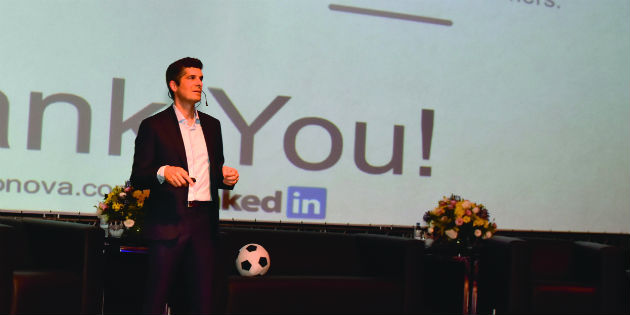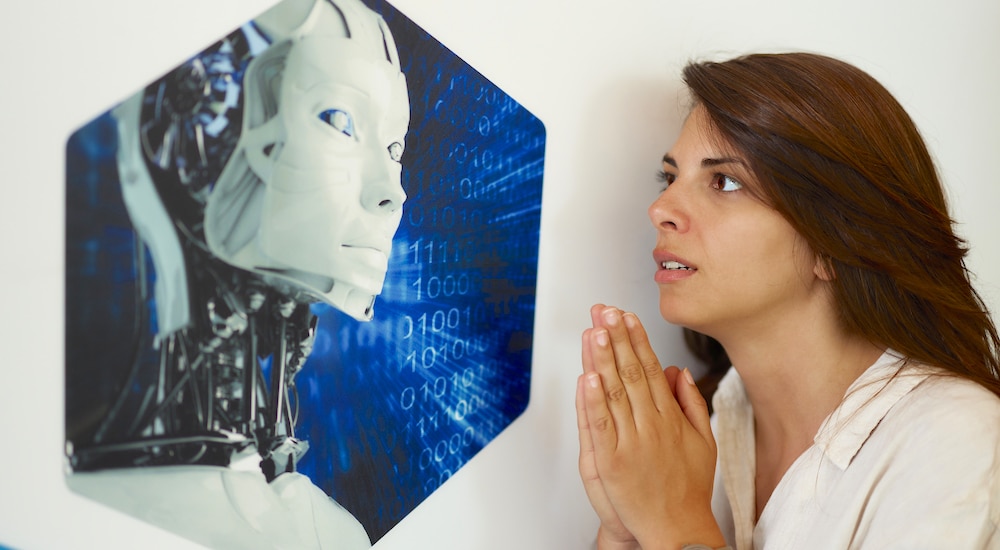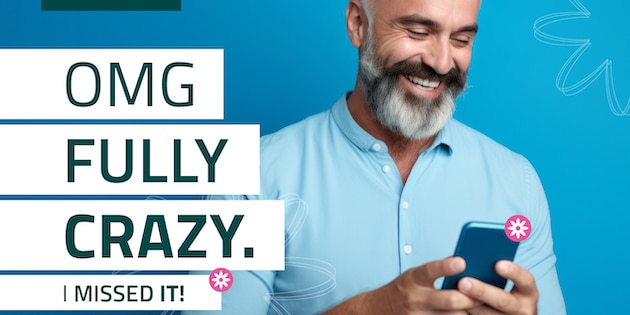"The digital transformation will not replace experts"
Interview
François Julita, Phonak’s director of digital experience, is responsible for developing digital solutions for responding in better ways to the needs of hearing aid users and hearing care professionals.

While he was at EIPA (São Paulo, June 20-22), he discussed current changes and their impact on the hearing aid sector.
Mr. Julita, can you explain to us your role at Phonak?
I have been working for the company for some twelve years. Iwas initially responsible for medical and fitting software, as wellas e-business and e-commerce. For the past five years, I havebeen working on projects related to hearing aidconnectivity through smartphones and the Internet, as well asconnectivity for medical software.
What exactly is “digital transformation”, the topic youaddressed during the EIPA? Connectivity? Online retail?Remote fitting? All of the above?
It is a term that causes a great deal of confusion. Manybelieve that digital transformation is about apps, websites or “e-business”. In fact, what is happening is that many businessmodels are being redefined in order to adapt to the newtechnologies at our disposal. These imply setting up new valuechains, and this process as a whole goes far beyond a singlesmartphone app. It is a much deeper (r)evolution, it is about howbusiness models and processes in hearing health care together.
How will this affect the field of hearing loss treatment?
That is a difficult question. What we have seen so far is that inthe past two years, telecare solutions, i.e., remotesupport of hearing device users, have started to emerge onthe market. I have been working in the hearing aid industryfor twelve years, and it’s only in the last 2 years that thingshave started shifting. In the future, we will probably see theemergence of new service models including activities such asonline remote fitting. In this context, what is usually causingconcern for audiologists are the tasks that might be handleddirectly by end users.
So, changes in the sector are still in their infancy.How do you explain this in view of the high technologicalcomponent of the hearing aid sector?
Indeed, this can be surprising for such a high-techindustry. I would say that in terms of adaptation of ourfield to the digital transformation, we are five years behindother industries. Hearing aids have a high technologicalcomponent; our professional practices, however, rely ontraditional and regulated processes. One of the reasons forthis is that the service model which has been in place formany decades, has been quite static. The biggest changein last decades was probably the introduction of digitalsignal processing.
What are the challenges posed by the digital revolution inthe hearing aid sector?
The emerging challenges that can be observed are similarto those found in other industries, such as automotive, homeautomation or consumer electronics when all products can beconnected to the Internet. The conversation that is happeningnow is about determining why and how a hearing device shall beconnected and to what other device. A mobile phone? Medicalsoftware? Or something else, like a car or a TV or even Alexa?
What can be said, then, concerning the convergence with“hearables”?
That is a vast topic. With the law that was recently approved inthe United States, the FDA now has two years to define whatproducts will fall within the OTC (Over-The-Counter) category.The misunderstanding stems from the fact that the FDA hasstated that the instruments under this category will still beconsidered as medical devices, but at the same time, theseproducts can also be sold in a less regulated way. Alongsidethis, new players are emerging, such as Bragi, which initiateda partnership with Mimi, which distribute the Mimi IO app for ahearing test. The two companies announced their collaborationduring this year’s Consumer Electronic Show at CES2018.One can assume that this type of convergence is linked to thelegislative developments in the United States. I am confidentthat within twoyears, a wholenew rangeof productsoccupyinga niche halfway betweenhearables andhearing aids will emerge. Today, you do not see many people inthe street using hearables on a regular base. Yet, with the newApple AirPods, I see many more people, and even more maturepersons, using a device in their ear, also in conversations. Thisis an interesting phenomenon, because it means that havingsomething in your ear is no longer seen as a psychologicalbarrier to communication.
What about big players such as Samsung and Apple?
Historically, the hearing aid sector was very small comparedto the consumer electronics market with the large players.But with the recent regulatory developments in the UnitedStates and the upcoming emergence of OTCs, this marketcould, in theory, become much larger and consequently couldattract new and big players. Many of the big companies have aportfolio of patents in the area of hearing loss compensation..Bose for example launched its “Hearphones” two years ago.When you look at the TV ads for Hearphones, you would thinkit is in fact an ad for a hearing aid. So, I think there is a high chance for some convergencein three to five years. Thebeginnings of this trend canbe seen with AirPods, whosefeatures are gradually increasingwith, for example, real-timestreaming through the iOS 12operating system, which allowsthe use of the phone as a remotemicrophone.
How do you think this boomwill crystalize in the future?
That is another difficult question,because we have beenexperiencing exponential curvesin all sectors, and we are only at the beginning of a morefundamental change. It is not easy to say what we can expectin ten years’ time, other than the fact that current trends willcontinue and grow.
How do professionals in our sector feel about theuncertainty inherent to these developments?
At conferences, audiologists and hearing care professionalsusually mention two main fears. The first concern is theprotection of consumers’ personal data. Hearing careprofessionals are worried these data will be taken bymanufacturers. My answer is that the hefty fines set out by thenew regulations on data protection in the event of infringementare a strong deterrent. This means that both patients andhearing care professionals are protected by new privacy laws.The second fear expressed by professionals is that theirjobs may disappear. We should move beyond this fearand look at what is happening in other areas of medicinewhere these new technologies are already at play. Whatcan be observed is that, even if the place of professionalsis evolving, the digital transformation will not replace theirrole as experts. Today, many hearing care professionalsare feeling a little overwhelmed… I believe that all industryplayers, manufacturers and hearing care professionals, shouldcome together to build a shared body of knowledge gearedtowards the creation of value. At Phonak, for example, we have launched an eAudiology initiative(see #eaudiologyphonak), whichbrings together professionals whoalready have experience in this fieldto identify and share best practicesand protocols.
Would you say we are moving froma sales-based model to a servicebasedsystem, given that sales arenow provided by other channels,such as the Internet?
When you look at online retail inour industry, many players in thepast have disappeared after only afew years. This can be explained bythe fact that our sector remains closely linked to health careand therefore to the concept of trust. The same phenomenonoccurred with e-banking and banks that wanted to transition toan exclusively online offer. Most of them disappeared becausecustomers expect the bank where they have all their savings toexist physically. So even if people adopt e-banking practices,they also want to be able to talk to their banker in person. Thisis why fully virtual models have not succeeded. It seems to methat there is a similar phenomenon in our sector. There will be amix between virtual and “real” contact, because of the need fortrust inherent to a sector related to healthcare. The end resultmight be a market divided into a medical segment on the onehand, and a non-medical one on the other. If this happens, thefirst would concern the most complex cases, paediatric casesand implant cases. As for the second segment, it is difficultto say what will happen, even if we can assume that it will bemore aggressive with online sales for patients with mild tomoderate hearing loss.
However, for now, the issue of trust is still core to our business,therefore, the market will tend to evolve slowly with a gradualchange in the role of hearing care professionals.
Read this feature on our Audiology Worldnews EUHA 2018 Special Issue:
Translation: Ròisein Kelly



